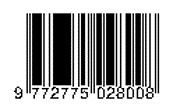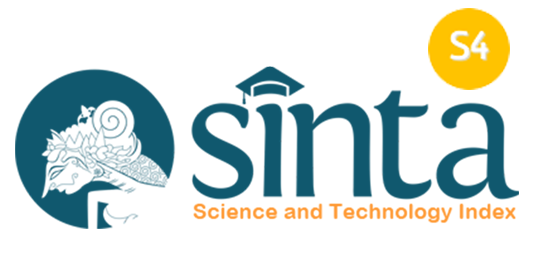DOMINANT FACTORS CAUSES OF DRUG ABUSE IN ADOLESCENTS AT THE LAMONGAN DISTRICT PENITENTIARY
Downloads
Introduction: The use of illegal drugs is increasing in adolescents and the consequences that will damage the generation so that it must be sought or known influencing factors as preliminary data in determining intervention. According to a preliminary survey at the Lamongan District Penitentiary in 2011, the number of suspects and defendants of drug abuse was 115 people, of whom 63 were teenagers. This study aims to determine the dominant factors that influence drug use in adolescents. Methods: The research design used in this study study uses a descriptive method, namely describing or explaining the factors that cause drug abuse in adolescents. The population in this study were all adolescent drug users in the Lamongan District Correctional Institution in May 2012 as many as 63 people. In this study the sampling technique used was purposive sampling, namely the technique of determining the sample by selecting samples among the population according to what the researcher wanted. In this study the instrument used was a closed questionnaire sheet. Data processing and data analysis by editing, coding, scoring, tabulating and analyzed purposively. Results: Based on the study, several factors were found to be the causes of drug users in adolescents at the Lamongan Penitentiary, including: Social environment (23%), personality (20%), family (8%), education (21%), and presence Drug (19%). Conclusion: Social environmental factors are the dominant factor causing drug abuse in adolescents at the Lamongan Penitentiary.
Arikunto, S. (2013). Prosedur Penelitian: Suatu Pendekatan Praktik. Jakarta: Rineka Cipta.
Badan Narkotika Nasional, (2009). Advokasi Pencegahan Penyalahgunaan Narkoba Bagi Petugas Lapas / Hutan. Jakarta: BNN.
Fajarsulistyono, (2009). Faktor yang Mempengaruhi Penyalahgunaan Narkotika, Psykotropika dan Bahan Berbahaya. Diakses dari http://www.freewebs.com/fajarsulistyo/faktor.htm pada tanggal 1 Februari 2012.
Fallian, Hismy, (2008). Narkoba Gelap Euy Seri 1. Bogor: Indobook Citra Media , (2008). Narkoba Gelap Euy Seri 2. Bogor: Indobook Citra Media.
Harlina, Lidya, (2008)
Hawari, Dadang, (2001). Penyalahgunaan dan Ketergantungan NAZA. Jakarta: FKUI.
Hidayat, A. Aziz. 2014. Metode Penelitian Keperawatan dan Teknik Analisis Data. Jakarta: Salemba Medika.
Joewana, Satya, (2005). Gangguan Mental dan Perilaku Akibat Penggunaan Zat Psikoaktif: Penyalahgunaan Napza / Narkoba Edisi 2. Jakarta: EGC.
Narendra, Moersintowati B., (2008). Tumbuh Kembang Anak dan Remaja. Jakarta: CV. Sagung Seto.
Nursalam, (2008). Konsep dan Penerapan Metodologi Penelitian Ilmu Keperawatan: Pedoman Skripsi, Tesis dan Instrumen Penelitian Keperawatan. Jakarta: Salemba Medika.
Sutiyoso, Bambang, (2010). Penyalahgunaan Narkoba dan Upaya Penanggulangannya. Diakses dari http://bambang.staff.uii.ac.id/2008/08/26/penyalahgunaan-narkoba/ pada tanggal 17 Januari 2012.
Rahmad, Ridwan, (2008). Akibat Penyalahgunaan Narkoba dan Upaya Penanggulangannya. Diakses dari http://mentoringku.wordpress.co.id/2008/09/18/penyalahgunaan-narkoba/ pada tanggal 04 Februari 2012.
Soekidjo Notoatmodjo, (2007). Promosi Kesehatan dan Ilmu Perilaku. Jakarta: PT Rineke Cipta.
Sarlito Wirawan Sarwono. 2012. Psikologi Remaja. Jakarta: PT. Raja Grafindo Persada.
Sofyan Willis, (2008). Remaja dan Masalahnya. Bandung: Alfabeta.
Yosep, Iyus, (2009). Pendekatan Holistik Pada Gangguan Jiwa. Jakarta: FKUI.
Copyright (c) 2020 Khotibul Umam , Agung Prasetyo

This work is licensed under a Creative Commons Attribution 4.0 International License.
Copyright Notice
1. The journal allows the author to hold the copyright of the article without restrictions.
2. The journal allows the author(s) to retain publishing rights without restrictions.
3. The legal formal aspect of journal publication accessibility refers to Creative Commons Attribution (CC BY).














